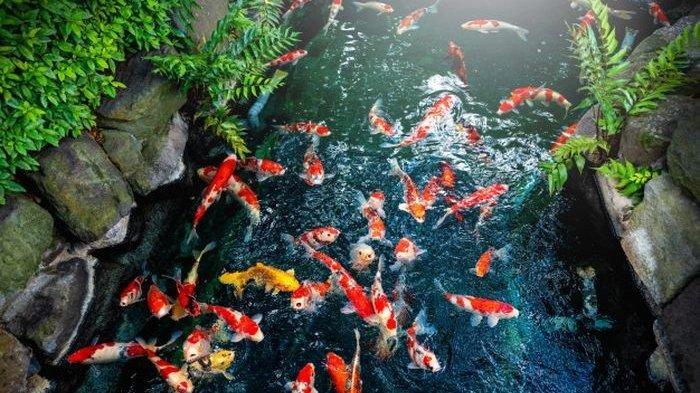UNAIR NEWS – BBesides its body shape, the quality of koi fish, especially those for contests, is judged by the brightness and sharpness of the color. Genetic factors and the lineage of the fish mostly influence the color of the fish. However, nutritional factors can also play a role to beautify the color of koi fish.
It was explained by Nina Meilisza, a researcher of Research Institute for Ornamental Fish Culture (BRBIH) Depok in the Webinar Merah Putih (Red and White Webinar) on Monday, August 16, 2021. The webinar was a collaboration between the Faculty of Fisheries and Marine Sciences (FPK) UNAIR and BRBIH.
On that occasion, she explained that the koi fish color is influenced by the pigments produced by the chromatophore cells. Koi has four true chromatophores: Melanophores that produce melanin (black), Erythrophores that produce pteridine (red), Xanthophores that produce carotenoids (yellow) and Iridophores that produce crystals of guanine and purines (sparkling).
“And one chromatophore cell that does not produce pigment so that it gives the fish its white base color is called leucophores,” she said.
She continued, the fish can produce color pigments by themselves. Thus, the cultivators just need to give them high quality food without any supplements of specific pigments to improve the color of the fish.
However, she continued, carotenoids are different. Fish cannot produce carotenoids on their own and requires external intake. “Therefore, to improve the color, supplements with high carotenoid contents are generally given,” she added.
Nina revealed, there are 800 types of carotenoids, but the one that gives the color effect to fish is Astaxanthin. Carotenoids can be obtained from many sources such as vegetables, fruit, algae (Chlorella etc.), crustaceans, and synthetic materials.
“Other carotenoids that enter the body will later be metabolized into astaxanthin which gives a yellow, orange, and reddish effect on fish. Moreover, koi fish can easily metabolize astaxanthin. Therefore, we can give them several types of carotenoids except beta-carotene,” she said.
Ending her presentation, Nina revealed that in feeding carotenoid supplements, especially synthetic carotenoids, it is necessary to pay attention to the dosage. She explained that overdose would only cause losses.
“The minimum dose of 100 mg/kg of feed is enough to maintain the color of the fish, and if you want to increase the color, you can use a maximum dose of 150-200 mg/kg of feed. More than that, the cost will be higher, but the performance will be the same,” she concluded.
Author: Ivan Syahrial Abidin
Editor: Nuri Hermawan





